The Culture method of Pelargonium summed up the experience of Abelmoschus Culture
Hydrangea, also known as geranium and paraffin red, is a perennial herb of the Bovine Seedling family. The flowering period is long, except when the summer weather is hot, it can blossom from October to the following spring from April to May. The flowers are colorful and varied. It is a good potted flower. It likes warm climate and fertile loose soil, resistant to drought and waterlogging, poor growth in hot summer and high temperature, and is in a semi-dormant state.
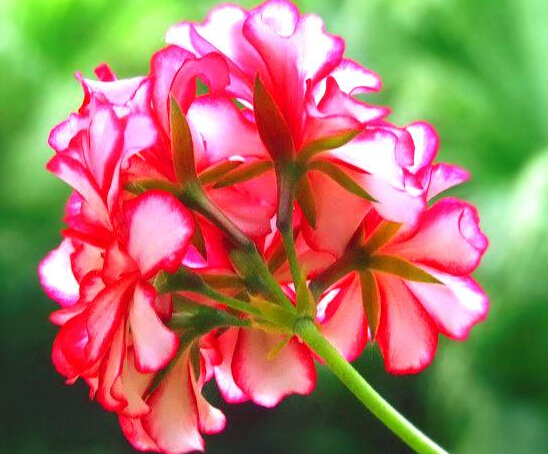
Culture methods of geraniums:
1. Soil: geranium has strong adaptability and can grow in all kinds of soil, but the sandy loam soil rich in humus grows best.
2. Watering: geraniums like dryness, hate dampness, and should not be watered too much in winter. When the soil is wet, the stem is tender, which is not conducive to the sprouting and opening of flower branches. Long-term excessive humidity will cause the plant to grow too much, the position of the flower branch to move up, and the leaves to yellowing and fall off.
3. Sunshine: geraniums need plenty of sunlight during their growing season, so they must be placed in the sun in winter. Lack of light, long stems and leaves, soft pedicels and dysplasia of inflorescences. Buds in low light often fail to bloom and wither ahead of time.
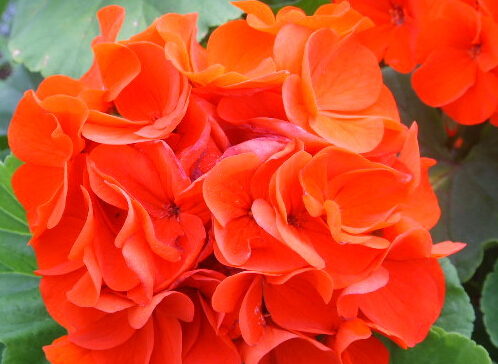
4. Temperature: the geranium likes to be warm in winter and cool in summer. It can blossom normally when the indoor temperature is kept 15 ℃ every day in winter and the temperature at night is above 8 ℃. But the optimum temperature is 15-20 ℃.
5, fertilization: geraniums do not like big fertilizer, too much fertilizer will make geraniums grow too prosperous and not conducive to flowering. In order to bloom luxuriantly, watering dilute book fertilizer water (rotten bean cake water) once every 2 weeks can promote normal flowering by watering 800 times potassium dihydrogen phosphate solution every 7-10 days.
6. Insect pests: geraniums are poorly ventilated and too humid, and are prone to leaf spot and Fusarium wilt. After discovery, pay attention to ventilation, immediately remove sick flowers and leaves to prevent infection, and spray the same amount of Bordeaux solution to prevent and cure. The main pests are red spiders and whitefly, which can be sprayed with 1000 times of omethoate emulsion.
7. Pruning: pruning in order to promote more flowering of the geranium with more branches, it is necessary to pick the heart of the plant many times to promote it to increase branches and budding. After shedding the flowers, cut off the residual flowers at the right time, cut off the too dense and thin branches, so as not to consume too much nutrients, but it is cold in winter and should not be re-cut.
Maintenance of Pelargonium in winter
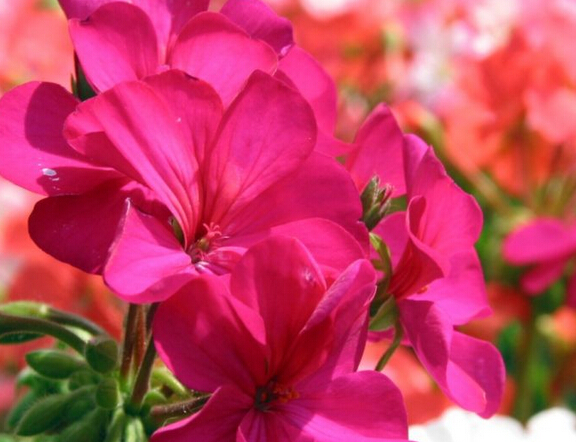
Geraniums like temperature and light and are afraid of cold. Measures should be taken to prevent cold in winter. The indoor temperature should be kept at 15 ℃-20 ℃ and not less than 10 ℃ at night. In the environment of too low temperature, the plant growth is weak, which is not conducive to flower bud differentiation, resulting in less flowering, or even no flowering. But the environment with temperature higher than 25 ℃ is also disadvantageous to its growth and development. Usually, the pot plant should be placed in front of the sunny window to make it fully receive the light. If the light is not enough, the plant is easy to grow wildly, affecting the formation of flower buds and even causing the formed buds to wither.
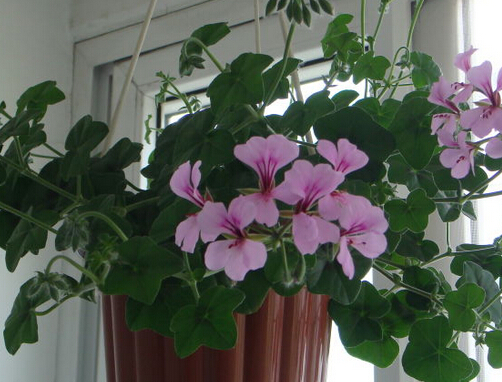
Moderate water and fertilizer geraniums are afraid of dampness and drought resistance, so they should be watered appropriately every day, usually every 5-7 days, and keep the basin soil dry and slightly wet. Too much watering will cause leaves to yellowing and fall off, affect flowering, and even cause rotting roots and death. Usually, the foliar surface should be sprayed with clear water to keep the foliar surface clean, which is conducive to photosynthesis. In order to make the pelargonium blossom continuously after winter, sufficient nutrients should be supplied. Dilute liquid fertilizer should be applied every 10 days or so. It can be mixed with bean cake, hoof slices and fishy water and used after fermentation.
Pruning and coring in order to promote more flowering of the more branched geranium, it is necessary to pick the heart of the plant many times to promote it to increase branching and bud pregnancy. After shedding the flowers, cut off the residual flowers at the right time, cut off the too dense and thin branches, so as not to consume too much nutrients, but it is cold in winter and should not be re-cut.
Prevention and control of main diseases of geranium:
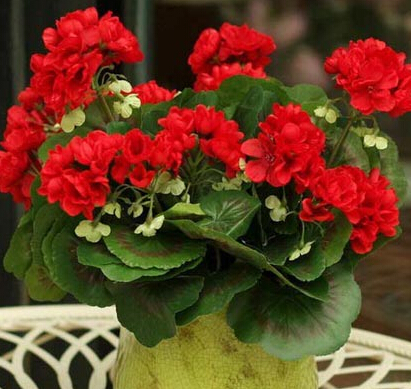
1. Leaf spot. In the early stage, small needle-sized, round or irregular brown spots will appear on the leaves, and then gradually expand to dark brown or reddish brown spots, and in severe cases, the whole leaf is covered with disease spots until they dry up and fall off. The stems and branches of the stem are also black, wrinkled and rotten, and even the leaves on the stem wither and die, leaving only a few leaves at the top.
Preventive measures: a. Greenhouse cultivation density should not be too large, should pay attention to regular ventilation and light transmission.
b. Avoid watering the plant and avoid splashing water droplets.
c. Avoid cutting cuttings on diseased plants. If diseased leaves and branches are found, they should be cut off and burned.
d. Spray 200 times the same amount of Bordeaux liquid every 2 weeks during the period of high temperature and humidity for 3 consecutive times.
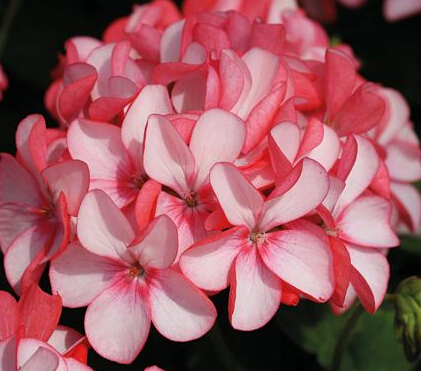
2. Grey mold. The disease is mainly caused by too much watering, which is more serious when it is cold and wet. First harm the flowers, so that the edge color of the petals darkened and withered, too much air humidity will appear gray mold layer, florets kink together, damaged petals fall on the leaves, will also cause the disease of the leaves. There are water-stained brown spots on the leaf surface, which are covered with light gray layers after drying and shrinking.
Prevention and control measures: a. Timely removal of diseased leaves and flowers, watering to avoid feeling on the plant, timely removal of water on leaves and flowers, often pay attention to ventilation and light.
b. In the early stage of the disease, 75% chlorothalonil 500 times liquid was sprayed for 3 times in a row.
The above are the geranium culture methods shared by the author according to the experience, as well as the precautions for winter culture and the prevention and control measures of some diseases and insect pests. I think since we want to plant, we have to plant well, so it is necessary to know more about it. If you have any questions to leave a message for the author, I will reply to you.
In severe cases, the whole leaf is covered with disease spots until it dries up and falls off. The stems and branches of the stem are also black, wrinkled and rotten, and even the leaves on the stem wither and die, leaving only a few leaves at the top.
Preventive measures: a. Greenhouse cultivation density should not be too large, should pay attention to regular ventilation and light transmission.
b. Avoid watering the plant and avoid splashing water droplets.
c. Avoid cutting cuttings on diseased plants. If diseased leaves and branches are found, they should be cut off and burned.
d. Spray 200 times the same amount of Bordeaux liquid every 2 weeks during the period of high temperature and humidity for 3 consecutive times.

2. Grey mold. The disease is mainly caused by too much watering, which is more serious when it is cold and wet. First harm the flowers, so that the edge color of the petals darkened and withered, too much air humidity will appear gray mold layer, florets kink together, damaged petals fall on the leaves, will also cause the disease of the leaves. There are water-stained brown spots on the leaf surface, which are covered with light gray layers after drying and shrinking.
Prevention and control measures: a. Timely removal of diseased leaves and flowers, watering to avoid feeling on the plant, timely removal of water on leaves and flowers, often pay attention to ventilation and light.
b. In the early stage of the disease, 75% chlorothalonil 500 times liquid was sprayed for 3 times in a row.
The above are the geranium culture methods shared by the author according to the experience, as well as the precautions for winter culture and the prevention and control measures of some diseases and insect pests. I think since we want to plant, we have to plant well, so it is necessary to know more about it. If you have any questions to leave a message for the author, I will reply to you.
Related
- Wuhan Hospital Iron Tree Blooming Result Was Instantly Frightened by the Gardener Master
- Which variety of camellia is the most fragrant and best? Which one do you like best?
- What is the small blue coat, the breeding methods and matters needing attention of the succulent plant
- Dormancy time and maintenance management of succulent plants during dormancy
- Minas succulent how to raise, Minas succulent plant pictures
- What are the varieties of winter succulent plants
- How to raise succulent plants in twelve rolls? let's take a look at some experience of breeding twelve rolls.
- Attention should be paid to water control for succulent plants during dormant period (winter and summer)
- Watering experience of twelve rolls of succulent plants
- Techniques for fertilizing succulent plants. An article will let you know how to fertilize succulent plants.



